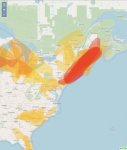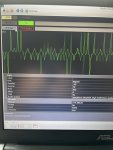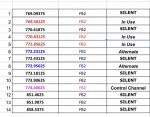You have entered the promised land of understanding and now see the problem.
I omitted two licenses that have 800 MHZ approvals. WQYP261 WRAM854. Below is updated resource list. Presently 3 channels are available for talk paths, unused capacity about 8 channels. That would be about a 250 percent increase in talk paths.
That is an amazing quantity of capacity, silent in Somerset. More capacity that could needed to accommodate everyone. The list below shows more capacity than NJICS Site 7 Union County which is burning with data & TG’s and users.
Somerset is yet another example of hoarding, along with many other licensees. If only there was a real FCC rule to put this valuable resource in service instead of pushing paper and consultants money.
The Somerset infrastructure exists by in large to support new GTR8000 repeaters as an existing 700 TRS system is in use. Morris for example had to start with much less, yet they are getting it done. Way to go Morris!
Sadly, the most disturbing matter is the life safety risk hazard for Fire and EMS left on 500 MHZ year after year. Tropospheric television signals ride in and out like waves. This RF (500-506 MHZ) overwhelms repeater inputs, especially those up high. The same DTV RF wipes out the Control Channel too. System outages can occur at anytime without warning, for minutes, hours or days at a time.
Will your call for help be heard? Maybe, maybe not. Not good, at all.
This is not Mission Critical performance (on the 500 p25 cell) and is totally unacceptable. I have read the many filings with the FCC from agencies expressing concerns about DTV tropo and the inherent life safety risk to users. The Counties specifically state they cannot and will not operate systems under these conditions risking their responders. Ocean and Morris are two that come to mind.
The dice are being rolled here in Somerset year after year and I personally object. I know many of our Counties unsung heroes and their families. I will be the first to be deposed or testify should the worst occur and yes I have plenty of hard evidence.
What is being done (or not) is bull****, period. No excuses, strive for excellence and do the right thing! You hold the keys, they can open anything!
View attachment 126990





![[028311].jpg [028311].jpg](http://forums.radioreference.com/data/attachments/103/103029-097b44493137eba506b27246e18cdda3.jpg)